Tag: FITNESS
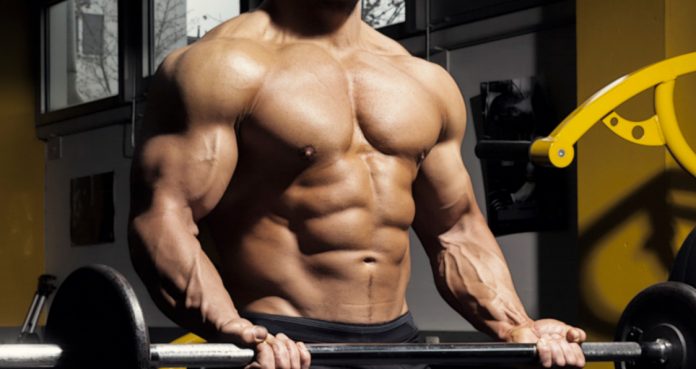
This is Why Bodybuilders Are More Jacked Than CrossFitters
Why Bodybuilders Are More Jacked Than CrossFitters
Comparing athletes from different backgrounds has become a standard, especially after the MMA athletes have started stepping into the boxing rings with their gloves on. The Connor McGregor and Floyd Mayweather fight have started a trend which is going to go on for a long time.
Bodybuilders and CrossFitters are no strangers to this comparison. Athletes from these backgrounds are compared to judge which is the better sport. Beginners make the comparison to choose between which sport they should opt for.
The Goal
While bodybuilders train to craft their physiques by building muscle mass and symmetry, CrossFitter’s workout to get fitter. The end goal of both these sports should be evident from the fact that bodybuilding shows determine the best physique on stage and the CrossFit games are meant to discover the fittest man and woman.
In a bodybuilding show, athletes are marked for the mass, symmetry, and conditioning of their muscles. In a CrossFit game, the athletes compete and have to outdo each other in the workouts.
Training
The bodybuilders train for breaking their muscle tissues and are always chasing the pump. Bodybuilders usually follow a training split and will have a set duration of rest time between working sets.
CrossFit athletes, on the other hand, follow a WOD (workout of the day) which is often a circuit which targets building strength and stamina. CrossFitters also do group workouts where a large number of people perform the same workout as a “class”.
Use of Machines
Bodybuilders use machines in their workouts to include variations and isolate their muscles. Most bodybuilding gyms are filled with numerous machines to add variety to the workouts and shock the muscles into growing.
CrossFit gyms are bare bone as compared to the bodybuilding gyms. The CrossFitters rely on functional movements in their training which usually include barbell, dumbbell, kettlebells, and pull-ups bars and don’t use a lot of machines.
Nutrition
It is no secret bodybuilders love protein. Bodybuilders follow a diet plan along with their training program. The bodybuilders also use supplements (now a billion dollar industry) to assist with their goals.
While the CrossFit athletes train to become the fittest individuals, their diet plans can be vastly different than that of the bodybuilders. The CrossFitters don’t usually use pre and post-workout supplements.
Advanced Training Techniques
The bodybuilders use advanced training techniques like drop sets, supersets, intraset stretching, BFR (blood flow restriction) training to shock their muscles and fill them up with blood and lactic acid. The bodybuilders will often train to muscle failure in their sets.
CrossFit athletes don’t train to exhaust their muscles and don’t use advanced training techniques. CrossFitters don’t usually target a specific muscle group like biceps or chest and will rather follow a full body workout.
Are you a bodybuilder or a CrossFitter? Let us know in the comments below. Also, be sure to follow Generation Iron on Facebook and Twitter.
*Header image courtesy of Envato Elements
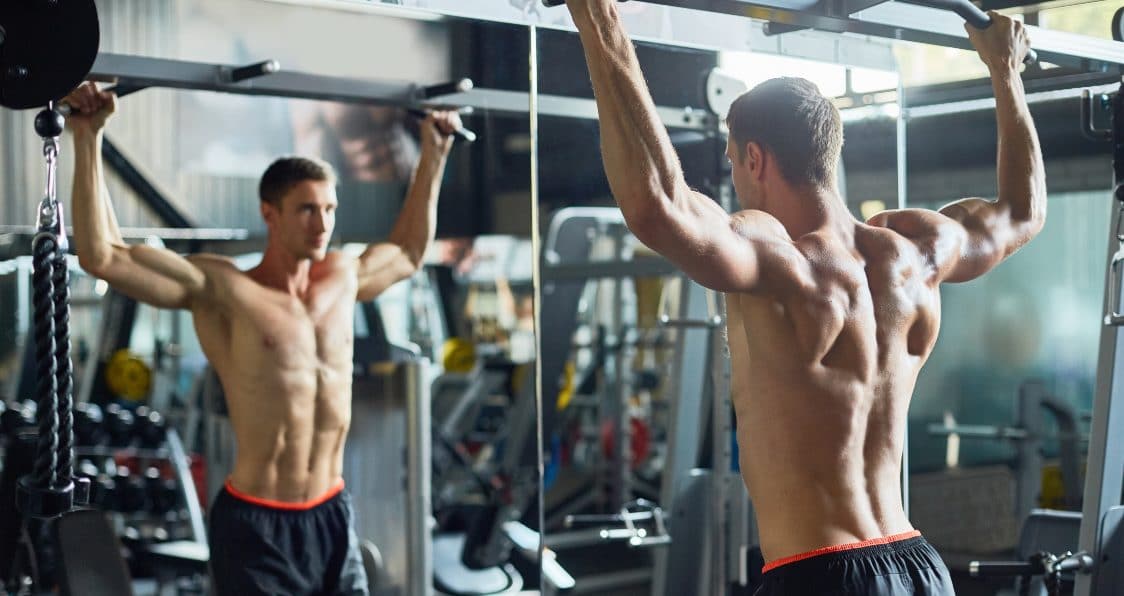
Should You Follow Someone Else’s Training Plan, Or Is Your Own Better?
A training plan is just a training plan, right?
Those of us who take our training plan seriously know how hard it can be to actually formulate and design an effective one. There are so many exercises out there and it can be extremely difficult to pick and choose which exercises are best for growth. At the end of the day, an exercise is just an exercise, right?
While there is of course truth to this, and truth that all exercises will help produce gains, there is something to be said about finding those exercises that are right for you. An effective training plan consists of workouts that you respond to. On top of that, constantly changing up your workouts is important as you look to get the most out of each and every training session.
But what happens if you use the training plan of a friend. We did already say that exercises are just exercises at the end of the day. So, can you use the training plan of a friend to see great gains? A better question may actually be, is it smart to use the training plan of a friend to see gains?
There is of course back and forth debate on this, but let’s jump into this question and see why it might be or might not be the best plan of attack for you. While there are benefits to both sorts of training plans, we’ll let you decide for yourself.
Benefits Of Your Training Plan
A training plan that is individualized for you can be extremely helpful in the long run for it is literally made for you. Not all workouts are one size fits all and there are certain exercises that some people may respond to better. Plus, a training plan for you can be geared towards and specifically designed to tackle certain needs you may have.
Let’s think about it like this. If you are a runner training for a marathon, you wouldn’t use someone else’s training plan who is working towards a sprint race. It sounds simple enough, but when it comes to lifting, someone else’s training plan may be geared towards a powerlifter or for them preparing for a competition, while maybe you are looking to shred and tone. Different strokes for different folks.
Ultimately, a training plan designed for you allows you to customize and specifically design your exercises around your certain needs.
Benefits Of Someone Else’s Training Plan
Using someone else’s training plan, however, may introduce you to other exercises you hadn’t thought about before. Often times we get stuck performing the same exercises over and over again and that can ultimately hurt our gains. What you will find by using someone else’s plan is that you can experiment and see what kind of results these exercises will yield before taking the time to pencil them into your plan.
Also, you can work for some muscle confusion. Performing different exercises allows you to work those muscles differently and see better gains to ultimately lead to increased muscle growth. With someone else’s training plan, you can better work to create that muscle confusion to see the best gains possible.
How Best To Create Your Own Training Plan
Creating a training plan can be challenging, and may even be daunting, for you want it to be as perfect as possible. However, it is important that you consider certain elements to best make your plan as effective as possible.
Focus Of Each Day
The focus of each day is important for this determines what exercises are placed on which day. A great example of this comes from Jeff Nippard and his Push, Pull, Legs workout plan. By prioritizing muscles that push, muscles that pull, and then his legs, he has created a great plan with a clear goal for each training session.
Sets & Reps
Looking at your sets and reps is huge and will pay off in the long run depending on your goals. Higher sets with lower reps will work to increase muscle and size while something like higher sets and higher reps will increase muscular endurance with lighter weight. This ultimately comes down to you and how you feel about those intended goals.
With so much equipment at the gym to choose from, determining if you want to use free weights or machines is incredibly important and can prove to pay off in the long run. A healthy mix of both will produce the best gains and allow you take advantage of great workouts, including things like pull-ups, the bench press, and of course, the mighty deadlift.
Length Of The Session
The length of the session is important because our schedules tend to be very busy. When putting together your plan, what you will find is that the length of your session must reflect what you can handle with your daily schedule. If you can spare 90 minutes to 2 hours, then go for it. If you can only do 45 minutes to 1 hour, then make sure your plan fits that timeline.
One thing many people don’t do is create time for recovery in their training plan. The exercises are great but making sure you target recovery time will alleviate unwanted soreness while also leading to more growth, thus making sure that valuable time in the gym is not wasted.
Wrap Up
Putting together a training plan for yourself is the best way to go when compared to using someone else’s. What you will find is a specifically targeted plan for you that is working for your specific goals. Someone else’s plan, while it can give you certain insights, isn’t the best course of action for this can be too flexible and not specifically target your immediate goals. Take some of these tips above when looking to form your own plan and see what can happen when you create a plan specifically designed for you.
Let us know what you think in the comments below. Also, be sure to follow Generation Iron on Facebook, Twitter, and Instagram.
*Images courtesy of Envato
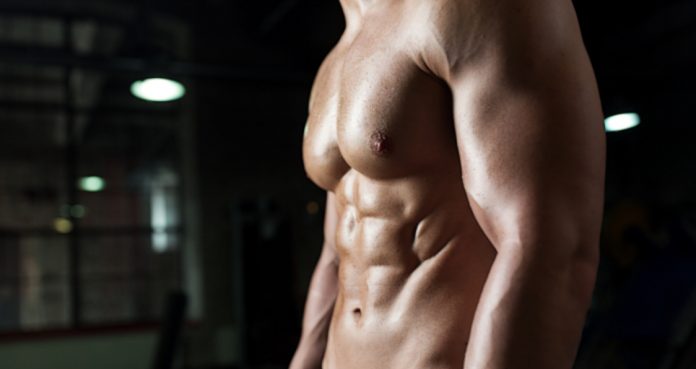
Build Six-Pack Abs at Home With This Workout
Ab Workout You Can Do at Your Home
The desire for obtaining a chiseled midriff is what gets many people to join a gym. What most people don’t realize is you don’t need to get a gym membership to build a six-pack. You can get the midsection of your dreams from the comfort of your home.
While many people train their core at home, a majority of them make the mistake of sticking to the good old crunches. You need to have a variety of exercises in your ab workouts to train your midriff from all angles.
Leg Raises – 3 Sets 15 Reps
In this workout, we won’t leave any stones unturned. We will focus on the upper and lower abs along with the obliques. If you have a hard and sturdy elevated surface at your home, perform the bench leg raises.
Otherwise, you can perform the floor leg raises. While performing the leg raises, make sure your knees are bent at a slight angle and hold the position throughout the exercise. You can also perform the hanging leg raises if you have access to a hanging bar.
Feet Elevated Crunches – 3 Sets 20 Reps
Feet elevated crunches are a variation to the normal floor crunches. In the feet elevated crunches, you can better isolate your upper abs. Lie down with your back placed on the floor and place your lower legs on an elevated surface like a bed or chair.
Your upper legs should be perpendicular to the floor and your hands placed at the sides of your head. Raise your upper body by pushing your lower back into the floor and squeeze your abs at the top of the movement as you exhale. Return to the starting position and repeat for the recommended reps.
Russian Twists – 3 Sets 15 Reps (Each Side)
A midriff can’t be deemed complete without well-carved obliques. Obliques are the fish gill-like muscles present at the sides of your abs. Most people overlook training their obliques and hence lack the definition in their mid-sections.
Sit on the floor with your knees bent so your feet are placed flat on the floor. Lean back your upper body so it forms a 60-degree angle with the floor. Extend your arms straight forward so your hands are above your knees. As you exhale, turn to your right side by twisting your torso. Return to the starting position and repeat on the left side.
Reverse Crunches – 3 Sets 20 Reps
Reverse crunches are the exact opposite of the orthodox crunches. While the crunches work the upper abs, the reverse crunches train the lower abs. Lie down with your back on the floor and place your arms at your sides.
Bend at your knees so only your heels are touching the floor. As you raise your legs, breathe in and bend your knees so that your upper legs touch your torso at the top of the movement. Return to the starting position while breathing out.
Heel Touches – 3 Sets 20 Reps Each Side
Training for toned sides can be detrimental in building a perfectly crafted midriff. The heel touches are one of the easiest exercises on this list. Lie down with your back on the floor and place your arms at your sides.
Bend at your knees so your feet are placed flat on the floor. Lift your head off the floor so that there is tension on your upper abs. Crunch at your ride side to touch your right feet. Return to the starting position and repeat on the left side.
Planks – 3 Sets 2 Minutes
Planks are an incredibly effective core strengthing exercise. Performing the planks are must for anyone who wants to train at home. A strong core not only makes your abs rock hard but also helps in performing compound movements by improving and strengthening your body stabilizers.
Get into a prone position on the floor, supporting your weight on your toes and your forearms. Bend your arms so that your elbows are directly below your shoulders and your forearms are parallel to each other. Your body should remain in a straight line throughout the exercise. Don’t let your hips sack down or form a bridge to take off the tension from your abs.
Which is your favorite exercise to perform at home? Let us know in the comments below. Also, be sure to follow Generation Iron on Facebook and Twitter.
*Header image courtesy of Envato Elements
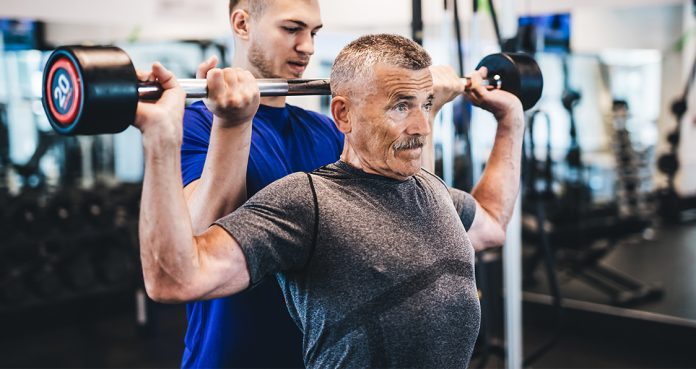
How To Approach Your Workouts After 40
How Your Training Needs To Change After You Turn 40
Your training method is going to be significantly different when you’re in your 40s as compared to your youth. Why is that, you ask? All the stair climbing, doing the monotonous chores, running after the kids takes a toll on the body and it starts to show after you’re 40.
To begin with, you want to stay away from people who generalize everyone over 40 and want them to believe that every individual is in the same condition all across the spectrum. The next time you hear someone say “age is just a number” – punch them in the face.
A Change in Priority
If you’re a muscle junkie, your best bet would be to build as much muscle as you can before you turn 40. Sarcopenia hits in when you’re around the 40-year-old mark. You will lose muscle naturally as you get older. While there are no health hazards associated with muscle loss, you can control how much muscle you lose, and when you start losing it.
With age, your workout intensity will drop and you shouldn’t be lifting heavy weights if you want to maintain your joint, muscle, and bone health. Focus on starting big and maintaining the muscle mass rather than trying to add on weight as you get older.
Basic Movement Patterns
Unlike most other sports, an individual can pursue bodybuilding for life. Bodybuilding also has the possibility of improving at ages when most athletes in other sports have called it quits. Don’t be surprised if you find a person who started bodybuilding at 15 and peaked at 40 or beyond.
Bodybuilding is a thinking person’s pursuit and everyone can work from the same basic set of principles. Some of the basic movement patterns that should become the cornerstone of your training are:
Horizontal push (pushup, bench press, fly)
Horizontal pull (row)
Vertical push (overhead press)
Vertical pull (chin-ups, pullup, lat pulldown)
Squat (squat, lunge, leg press)
Hinge (deadlift, back extension)
A Shift in Exercise Preference
While we agree compound (multi-joint) exercises like squats, lunges, deadlifts, presses, and rows are great for building strength and muscle mass, they can put you at a greater risk of an injury as you grow older.
Isolation (single-joint) exercises like curls, press downs, flies, and lateral raises are a much better option for people over 40 as they don’t consume a lot of energy, which means you can push yourself harder and recover faster.
Switch-Up the Intensity
Once you hit the 40-year mark, forget about hitting PRs on the bench press or deadlifts. Your workout program should have a higher number of reps. You’ll get better muscle growth in the 8-15 rep range, with less risk to your joints and easier recovery.
How would you know if you’re making improvements? Look for an improved form and a better mind-muscle connection. You should have shorter workouts and a better pump, or a better overall sense of well-being when you leave the gym after a workout.
Things NOT To Do
While we can go endlessly about the things you should be changing in your workouts after you turn 40, knowing about the things you shouldn’t do in the gym will set a better groundwork. These are the things you should avoid –
Exercises that put your shoulders in mechanically risky positions (dips, behind-the-neck presses, barbell upright rows)
Exercises that put your elbows under uncomfortable stress (elbow injuries always take longer to heal)
Ballistic or explosive exercises (kipping pullups, Olympic lifts)
Heavy barbell lifts (barbell squats, bench and shoulder presses, deadlifts)
How old are you? Let us know in the comments below. Also, be sure to follow Generation Iron on Facebook and Twitter.
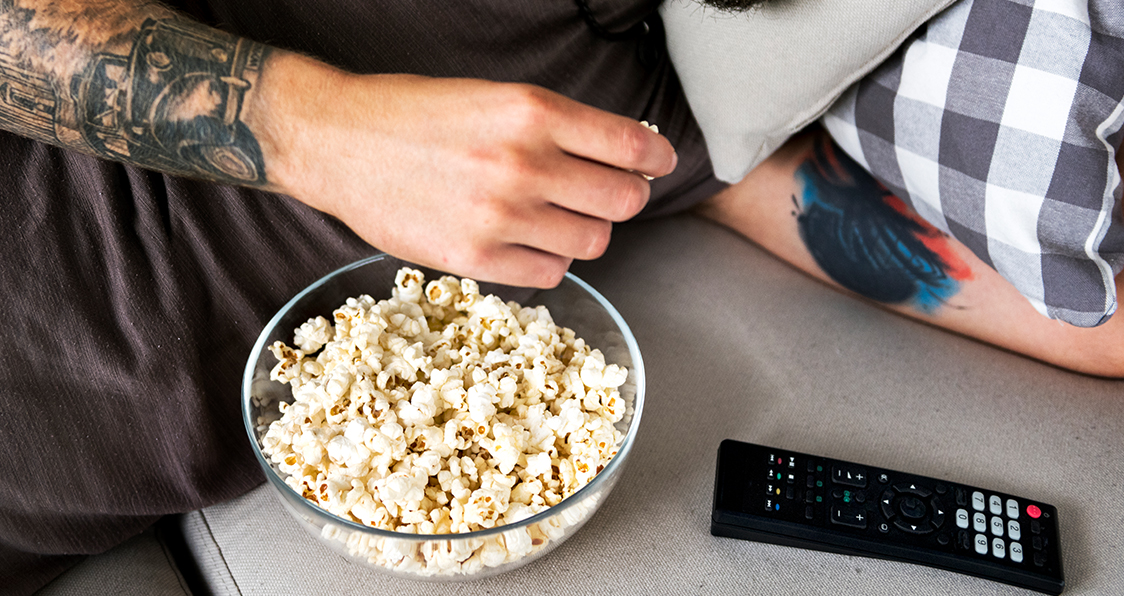
Binge Eating – Causes and How To Overcome It
The cause of binge eating and how to get past it.
What is binge eating? Binge eating is defined as the consumption of an unusually large amount of food in a short period accompanied by a sense of loss of control. An eating disorder can lead to obesity, depression, hypertension, and many other physical and mental problems.
Overweight people give various reasons for their weight gain like having heavy bones, bad genetics or some unique disease which is limited to them but they never admit that they are binge eaters.
The Causes of Binge Eating
Self-judgment
A negative self-image is largely based on one’s shape, weight, and self-control. When an individual starts believing that they can never lose weight and get in shape, they start to take comfort in binge eating.
Mood Fluctuations
The more volatile your mood, the more you’re prone to binge eating. The reason for this is that eating highly palatable foods makes us feel better during that brief moment of sadness, happiness, loneliness, frustration. Binge eating also serves as a temporary distraction from negative emotions.
Many people also fall upon binge eating because eating acts as an escape from their current situation. Finally, there are some people who can’t tell the difference between being hungry and being bored.
Following a Barbaric Diet
There is a high probability that you know someone who got in shape for a brief period before returning to their old selves. These people can’t keep the weight off because they follow too strict a diet to achieve their goal. Once their program ends, they tend to eat everything they can get their hands on.
Overcoming Binge Eating
Eating Small and Frequent Meals
If your goal is to lose weight, you should consider switching to a diet plan where you eat 5-8 small meals in a day as compared to the usual three big meals. These meals should come at a gap of three hours.
Eating frequent meals will not only limit your chances of binge eating by keeping you full throughout the day, but it can also help you in your weight loss journey by spiking your metabolic rate. It means that you’ll be burning fat even while you’re Netflix and chilling.
A Little of Everything
While on a diet, many people make the mistake of having a forbidden food list. These foods turn into “trigger foods” in that their consumption can cause considerable anxiety and can prompt binge eating.
Instead of going cold turkey on them, you should limit them to cheat days or a couple of days a week – if your diet plan allows. Once there are no forbidden foods, you don’t have to worry about random binge eating encounters.
Join a Physical Activity
Don’t worry, we’re not asking you to get a gym membership or train for a marathon. Research shows that working out for at least three days a week can help improve and maintain your health.
When you put in the effort to improve your physique, you’re less likely to let that hard work go to waste by picking up a donut with the coffee. Make a list of physical activities that bring you some pleasure and follow them for at least three days a week.
What is your favorite cheat meal? Let us know in the comments below. Also, be sure to follow Generation Iron on Facebook and Twitter.
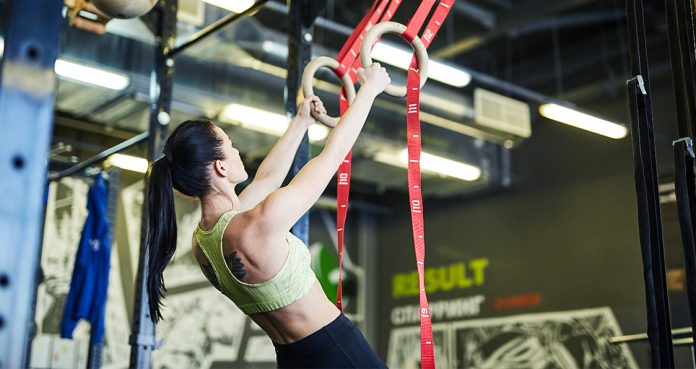
7 Changes Everyone Should Make To Their Training Programs – Today
Changes You Need To Make Your Workout Plan Today
Believing that their training program is foolproof is one of the biggest reasons why people don’t see the results they have been hoping for. You should constantly be making adjustments to your training program to keep your muscles guessing.
You could make all these changes at once or a couple of them at regular intervals. If you have hit a plateau or aren’t growing as fast or as big as you would like, you need to make these modifications to your training program.
Intensity
Intensity includes but is not limited to the number of repetitions. You should constantly change the number of sets, rest times, and weights to shock your muscles into growing. If you don’t break a sweat throughout your workout – you’re doing it wrong.
You have to get outside your comfort zone to see favorable changes in your physique. Sticking to the vanilla training program where you perform 12-8 reps and 3 sets of an exercise isn’t going to get you anywhere.
Advanced Training Principles
Bringing a new dimension to your workouts by using advanced training principles like super-sets, dropsets, intraset stretching, blood flow restriction (BFR) can take your gains to a new level.
Your muscles grow bigger and stronger when they are put under unfamiliar stress. The advanced training techniques can be the stimuli required to spark new growth. Using some of these techniques correctly requires you to be on an advanced level.
Adding What You’ve Been Avoiding
Almost everyone has something they have been putting off for the longest time. It could be cardio, squats, HIIT circuit training, etc. Making these things a part of your routine can ignite positive change.
Most people tend to avoid certain things because they find them hard. After you add them to your workouts, you might realize that it was all your body needed and you had been avoiding them for a reason.
Rep Speed
Tweaking the rep speed is one of the most underutilized ways of getting the most out of your workouts. There are a million combinations of how you could change the rep speed to constantly shock your muscles.
You can change the amount of time you take on the concentric (upward) and eccentric (downward) movements, and on the pause at the top and bottom of the lift. An example of this would be 5-1-1-2, i.e. five seconds on the eccentric movement, a second’s pause at the bottom, one second on the concentric motion, and a two-second contraction at the top.
Experimenting With A Training Partner
Training with a buddy can increase your input and output. You might be able to lift heavier weights and do more reps with a spotter. You also greatly reduce the chances of an injury while performing compound lifts.
On the flip side, training with a partner isn’t for everyone. If your partner has a big mouth, bad personal hygiene or isn’t an experienced lifter, they can turn into a liability rather than an asset.
Complete Reprograming
Sometimes it’s better to take a complete re-route. If you have been following a bodybuilding program for a long time, you could try doing a CrossFit, strongman or weightlifter’s training routine.
You could also try a new – but proven – workout program like Y3T, DTP, PH3, etc. You’ll have to put in the time to learn about the different training programs and understand which one is the best for you.
Training Time
By training time, we don’t mean the workout duration. If everything else fails, your best bet would be to change the time of the day you hit the gym at. If you previously worked out at 5 pm in the evening, you should experiment with training at 9 am.
Why so? We’re glad you asked. Sometimes your body doesn’t respond to your workouts because your eating and recovery routine doesn’t fit in well with your training time. Spacing your training, diet and recovery programs well is key to a successful transformation.
How often do you make changes to your training program? Let us know in the comments below. Also, be sure to follow Generation Iron on Facebook and Twitter.

How Wrist Wraps Enhance Bodyweight Workouts For Support & Stability
Use wrist wraps in efforts to enhance those bodyweight workouts.
We often find ourselves lifting big weight and neglecting the fact that bodyweight workouts can actually enhance our routine. A great bodyweight workout has the ability to provide for convenience and allow us the versatility of performing this anywhere and at anytime, however, for those of us looking to gain muscle and increase size, we look down on bodyweight workouts.
But we shouldn’t because these can greatly influence our gains with the right approach. For those concerned about unwanted soreness caused by those bodyweight workouts that target the upper body, fear not. Wrist wraps are a great lifting accessory that translates well into both bodyweight and weightlifting exercises. The right option for support and added stability, wrist wraps will go a long way for your routine.
Let’s take a look at both bodyweight workouts and wrist wraps to see how these two correlate. A great bodyweight workout can take our routine to new heights and a quality pair of wrist wraps will be a game changer when it comes to all of those support and stability goals.
Benefits Of Bodyweight Workouts
While we all love to lift big weight and take advantage of those machines in the gym, looking to bodyweight exercises also has plenty of perks. The benefits of bodyweight exercises will prove to you why you should put these into your routine and maybe even put an increased focus on these as well.
Benefits of bodyweight workouts include:
Convenient and versatile: These can be done anytime and anywhere and serve as a great workout with no equipment needed so you never have an excuse to not get a great workout.
Can build muscle: Bodyweight exercises actually can build muscle and it would be a mistake to neglect what these can do for all your gains (1).
Lower risk of injury: Without using weights and the sheer amount of load that weights can cause, what you will find is your risk of injury is lower and you can better tackle those recovery needs pain free.
Progression is strictly rep based: You can keep track of progress by counting how many you perform. If you start at ten push-ups and work to fifty, it is a clear line of progress in your strength goals.
Get that heart rate up: Work to elevate your heart rate to give yourself increased calorie burn and the chance at a great aerobic workout to increase endurance and shed some unwanted fat (2).
Perfect for all levels: Bodyweight exercises are perfect for people of all experience levels and will fit nicely into any number of routines.
Related: 10 Best Bodyweight Exercises For Building Muscle
Are Bodyweight Workouts Worth It Over Weightlifting?
Bodyweight workouts are better than weightlifting if it comes to the right person. Both are highly effective forms for seeing gains, however, depending on who you are and what your intended goals are, you can better tackle any and all of those exercise needs.
Given the above benefits, it would appear that bodyweight workouts can offer great gains to you, but so can weightlifting. For those who are more into seeing muscle growth with strength and size, weightlifting is for you. Those looking to build muscle and get the heart rate going in a convenient way with less load, then bodyweight exercises are for you. While it is a preference, you just need to know what your intended goals are.
How Wrist Wraps Benefit You
Wrist wraps are a workout accessory used by many to improve their lifts and overall training. However, wrist wraps can benefit your bodyweight workouts and is something to consider, especially for those prone to wrist pain and potential problems with wrist support and stability.
Benefits of wrist wraps include:
Stabilize your wrist: For those who want a solid grip or a more stable feel when working out, wrist wraps will hold your wrist in place to prevent excess movement that can cause unwanted pain and injury (3).
Provide better grip: A better grip allows for more comfort and if you are undertaking an aggressive workout, the more comfortable you are, the better you will perform (4).
Support high volume and intensity: For those more intense movements, what you will find is wrist wraps will keep your wrists supported and able to tackle any of those problems.
How Wrist Wraps Benefit Those Bodyweight Workouts
One may be wondering how exactly wrist wraps can benefit your bodyweight workouts. Without lifting weight, why is it important to use wrist wraps? Well, wrist wraps can provide that comfort, support, and stability for a number of bodyweight exercises, especially with the intensity and strain of certain movements.
Think of a push-up. Your wrists are constantly moving and overtime, that wear and tear can cause unwanted pain. Or the burpee, where the explosiveness of this movement and the catching of yourself on the ground can be a lot on your wrists. With wrist wraps, what you will find is that you are better supported for intensity, more stable during those static exercises, and better assisted for those more dynamic ones.
Related: Best Bodyweight Partner Exercises To Add To Your Workouts
Certain Bodyweight Exercises With A Focus On Wrist Wraps
Let’s take a look at a few bodyweight exercises that you should use wrist wraps with to enhance gains and work for the best protection and support.
Great wrist wrap bodyweight exercises include:
Push-Ups
Planks
Dips
Pull-ups
Burpees
Hand Walks
Check out our list of the Best Wrist Wraps for more great support and stabilizing products!
Wrap Up
Bodyweight exercise are perfect to include in your workout and when placed into your routine, you will see great gains minus the weight. While the load and increased strain on your wrists can be a lot, including wrist wraps in your routine is something to heavily consider for they can offer support, stability, and a great sense of comfort for those lifts. If you want to take advantage of a great bodyweight workout without worrying about unwanted wrist pain, then definitely consider wrist wraps in your gym bag.
Let us know what you think in the comments below. Also, be sure to follow Generation Iron on Facebook, Twitter, and Instagram.
*Images courtesy of Envato
References
Martins, F.; et al. (2018). “High-intensity body weight training is comparable to combined training in changes in muscle mass, physical performance, inflammatory markers and metabolic health in postmenopausal women at high risk for type 2 diabetes mellitus: A randomized controlled clinical trial”. (source)
Willis, L.; et al. (2012). “Effects of aerobic and/or resistance training on body mass and fat mass in overweight or obese adults”. (source)
Weiss, A. K.; Tsai, H. H.; Puffer J. C. (2002). “Bilateral Wrist Pain-Weightlifter”. (source)
Lee, Julia-Ann; Sechachalam, Sreedharan (2016). “The Effect of Wrist Position on Grip Endurance and Grip Strength”. (source)
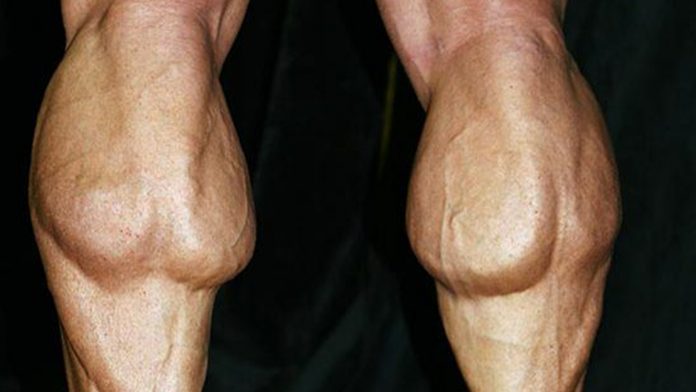
5 Reasons Why Your Calves Aren’t Growing
5 Reasons Why Your Calves Refuse to Grow
Calves can be one of the most stubborn muscle groups. Look around your gym and you’ll probably see a lot of people with skinny legs and even skinnier toothpick calves. Although calves are a small muscle group, they can be one of the hardest to develop.
Building calves can be harder for people with genetically weaker legs. If you’ve hit a plateau and your calves refuse to grow, you need to change your training program. This article will help you takes your calves game to the next level and get you ready for the summer.
1. Treating Your Calves as Accessory Muscles
Most people make the mistake of treating their calves as accessory muscles. They train their calves at the end of their workouts when there is nothing left in the tank. If you have lagging calves, you should be training them at the beginning of your workouts.
Don’t perform a single calf exercise at the end of your workouts. Do 12-15 sets on 3-4 different exercises targeting both your soleus and gastrocnemius muscles. Your calves should be flushed with lactic acid at the end of your workouts.
2. Sticking to the Same Training Routine
You have hit a plateau if your calves have stopped responding to your workouts. Shocking your muscles with new exercises or advanced training techniques like supersets, drop sets, intra-set stretching or blood flow restriction training is a great way to break the plateau.
You don’t need to be in the gym to train your calves and if you’re in the gym, you don’t need to use weights every time. Your own body weight is enough to get the ball rolling. If you don’t have access to calf training equipment at your gym, use an elevated platform to do the calf raises.
3. Not Training Your Calves From Every Angle
Your calves consist of three heads: inner, medial and outer. You need to train all the three heads to ensure an overall development. Switching your feet placement can make all the difference.
Pointing your toes inwards and the balls of your feet outwards will target the outer calves head. Pointing the toes outwards will target the inner head and keeping your feet neutral will work the medial head.
4. Doing Too Little
Calves are a small muscle group and can recover quickly from your workouts. A good rule of thumb to training your calves is to train them every day if they’re not sore. Toothpick calves won’t turn into full-grown bulls by training them once a week.
Three sets of standing calf raise at the end of your leg workouts aren’t good enough to budge the needle on your calf gains. Train your calves as you would train your biceps, and hit 12-15 sets.
5. Overloading
People will small calves usually engage in ego lifting and load the machines with more weights than they can handle. The range of motion is one of the key factors in calf development.
You should maintain a full range of motion and your toes should be pointed like a ballerina at the top of the movement. Establish a mind-muscle connection with your calves and pause and contract them with every repetition.
How often do you train your calves? Let us know in the comments below. Also, be sure to follow Generation Iron on Facebook and Twitter.

Eating These 6 Foods Will Heat Up Your Sex Life
Eating These 6 Foods Will Heat Up Your Sex Life
For the majority of the lifters, eating and sex are two of their most favorite activities. What if we told you eating could improve your sex life? No, we’re not some angels sent from the heavens to fulfill your destiny. We’ll be talking facts here.
If you pop faster than a packet of corn, you’re going to greatly benefit from the things you’re going to learn today. What you eat affects how you’re going to perform under the sheets. Unlike your muscular structure, your sex drive isn’t dependent on your genetics.
If the blue pill or alcohol are your entrusted solutions for lasting longer in bed, we can imagine your insecurities. The fact that you’re reading this article is enough to establish that the duration you last in bed is directly proportional to your partner’s satisfaction.
Eating the right food won’t only improve your performance, it can help treat erectile dysfunction as well. The icing on the cake is that these foods benefit both ladies and men. So, eating a dinner consisting of these foods before hitting the sack will be a great idea.
6 Foods That’ll Improve Your Sex Life and Libido
Bananas
Well, eating a banana on a date might be a tad too suggestive but it will ensure you’re starting things on the right foot. Bananas are one of the best sources of potassium and B vitamins.
These nutrients can help boost low energy levels – a common cause of low libido. B vitamins and potassium also contain bromelain enzymes, which help boost sex drive and can treat erectile dysfunction.
Potassium fights the effects of high sodium foods. Food high in salt can reduce the blood flow to the genitals which can make it harder to reach orgasm. Pro tip – if getting adventurous on the dinner table is not your thing, you would want to avoid eye contact while eating the banana.
Oysters
This certain body part resembling food is rich in zinc. Zinc is a mineral that elevates testosterone while simultaneously boosting growth hormone. Both of these enhance physical performance (in and out of the sheets) and muscle growth.
It is no secret that adding seafood to your diet can improve your daily protein intake quantity and quality. Seafood can also improve your immunity as they are rich in omega fats.
While the oysters might not look like salmon or tuna, they offer fish-like benefits and have high levels of B12, vitamins A, D, calcium, iron, selenium, copper, and zinc. A study conducted in Turkey concludes that zinc has the potential to help restore nitric oxide activity (resulting in better blood flow) in a man’s equipment.
Nuts
Clarification – the foods on the list are not deliberately listed to be implicative, we swear. Nuts like walnuts, peanuts, and pistachios all contain the amino acid L-arginine, which is one of the building blocks of nitric oxide.
Nitric oxide (NO2) is a naturally occurring element in the body that helps the guys maintain an erection. L-arginine dilates the blood vessels which enables a better flow of blood throughout the body.
Eating nuts regularly can also help in reducing cholesterol levels. The higher your cholesterol levels, the harder it will be for the blood to travel to different parts of your body – including your pee-pee.
Watermelon
If rumors are to be believed, eating watermelons will make you last longer than a camel in the desert. Watermelon contains an amino acid called citrulline which when converted to arginine, can boost nitric oxide synthesis and vasodilation.
A naturally occurring chemical called lycopene is present in high amounts in watermelons. Lycopene equals viagra in its ability to relax blood vessels which improves circulation to certain, ahem, body parts.
If L-arginine and citrulline sound familiar to you, it’s probably because most of the pre-workout supplements on the market contain both of these elements. These amino acids help in achieving a nasty pump in the gym.
Red Wine
Red wine might be the perfect way to start a long romantic night. According to a Journal of Sexual Medicine study, women who drank one to two glasses had heightened sexual desire compared to ladies who didn’t drink any wine.
But why red wine and not whisky, you ask? The antioxidant profile of the wines (like other food items on the list) triggers nitric oxide production in the blood which relaxes the artery wall and carries blood down south.
Pro trip – alcohol before a date night can be a two-edged sword. While going on a date with a girl who is out of your league might give you jitters, consuming a glass too many will stop the show before it starts.
Dark chocolate is another women’s favorite that is also great for improving your sex life. It also happens to be the most researched of the aphrodisiac foods. An antioxidant called flavanol is present in dark chocolates which like lycopene in the watermelons can boost nitric oxide levels and blood flow.
Garlic
There is a high probability you were unaware about the libido boosting properties of garlic until now. As per some historians, ancient Egyptians consumed garlic to boost their sex drives and stamina.
According to a study, consuming garlic helps stop the formation of new fatty deposits, called nano plaques, inside the arterial walls. For the uninitiated, the arterial walls lead to your penis. So, garlic basically acts as the bulldozer which removes the fat deposits that block blood flow to the arterial walls.
Adding garlic to your kitchen staples will help keep your heart healthy and your erections strong. You could use the garlic in powder, paste or cooked form in your diet. Thanks to the great fragrance of garlic, it goes without saying – don’t eat garlic on a date night.
Other honorable mentions
Oats, blueberries, pomegrante, coffee, pesto, fatty fish, potatoes, ginger, pumpkin seeds, crab, green tea, pepper, spinach are some other foods/beverages that are great for boosting your sex drive. We highly recommend adding a combination of these to your diet.
Which of these sex life improving foods is a staple in your diet? Let us know in the comments below. Also, be sure to follow Generation Iron on Facebook and Twitter.
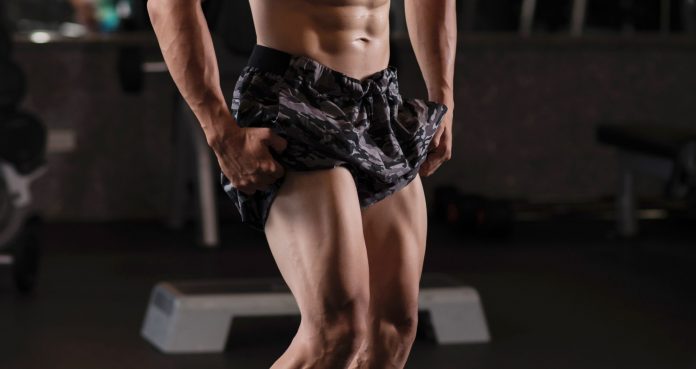
How Sissy Squats Really Strengthen Your Quads
Don’t let the name fool you into thinking these are for the weak.
When it comes to leg day, many of us have consistently done the same exercises over and over again. We all do squats, the leg press, and extensions, but rarely do we ever explore the unknown world of advanced bodyweight exercises. The sissy squat is one such exercise that is intricate and requires a certain degree of focus and sheer will to even attempt. Once you start to develop strength and size with these, there will be no turning back.
Don’t let the name fool you, for these are by no means for the weak-minded. In fact, the name actually comes from Greek origins about an old tale of Sisyphus and a punishment he endured. Whether or not this is true, its entertaining and for our sake of enjoyment with such a hard exercise, we’ll play along. While this exercise may cause unwanted knee pain for those willing to try them, the benefits to your quad and overall leg growth are enormous and will make you want to at least give them a go.
Let’s take a look at the sissy squats and see what the hype is all about. From what they are, to muscle worked, and the many benefit surrounding sissy squats, we will dive into this advanced bodyweight exercise so you know exactly what you are getting into.
What Is The Sissy Squat?
The sissy squat is a bodyweight exercise designed to target the lower thigh area and requires a certain level of advanced fitness to endure. It is one of those often overlooked bodyweight exercises that has great benefits to isolating your quads to make those legs pop. Aside from the benefits to strength and size, with proper form and a real level of resistance, those who choose to endure the sissy squat will work on mobility in areas like the ankles, back, and hips, as well as develop better coordination and balance that can assist with other big lifts.
A downside to the sissy squats is the knee pain that arises from performing the physical movement. As fragile joints that require the utmost care, those with existing pain in their knees should most likely refrain from doing this activity, but it is all a preference on what you can handle without leading to unwanted pain and injury.
Muscles Worked
When it comes to muscles worked, this is a serious lower body brutalizer. Immediately, you will feel this in your quads, which will start to work wonders for that tree-trunk aesthetic. But this exercise will also target your calves, hamstrings, and glutes, all essential for helping you stay balanced and upright for whatever comes your way. For those upper body muscles, your low back will feel some resistance as a point of connection for these larger leg muscles, and your abs will feel a bit of a burn as you squeeze them to stay engaged.
Benefits Of The Sissy Squat
The benefits of the sissy squats will work to effectively produce those large leg muscles that we all seek, while giving you benefits in terms of other areas of strength, mobility, and posture to handle your every day goals that seem to fall short. Let’s take a look at some of these benefits of the sissy squat:
Serious Leg Growth: Work those quads and other lower body muscles effectively with an advanced bodyweight exercise to see some serious leg growth (1).
Good Core Burn: Since your core is essential for maintaining balance and good posture, you will feel a great burn with these squats.
Increase Mobility: Mobility is key in advancing all movements and this will work to improve that to assist in other big lifts (2).
Develop Posture Through Strength: By strengthening your hips, and giving your low back some attention, you will develop better posture, thus increasing your confidence.
How To Perform This Exercise
Her are the steps for performing the sissy squat exercise:
Stand with your feet at around shoulder width apart and keep your core engaged. Bend at your knees and continue to lower your body until your torso starts to bend backwards. As you reach your limit, work to push yourself back to the starting position, using your core and leg muscles to get you there effectively. Reset and repeat for your desired number of reps.
Sissy Squat Tips & Tricks
This exercise can be painful on your knees, so if you do start to feel pain, switch it up, take a break, and look for other exercises until you can rehab it. There’s no point in pushing your knees to a limit they can’t handle because you’ll ultimately put yourself out of the gym longer than you have to. Really be cautious of range of motion. You don’t want to bend lower than you can and risk unwanted pain and injury. Keeping your core engaged with this will prove to be great in the long run as you will effectively work to nail this exercise down for great gains.
Sissy Squat Variations
For those interested in a few variations or added ways to perform the traditional sissy squat, here is a list of a couple for you try once you perfect the sissy squat.
Elevated Squat: Similar to the traditional sissy squat, the elevation will add an extra level of difficulty with more range of motion.
Weighted: Grab a dumbbell, kettlebell, or weighted vest to add some weight and great resistance.
Aladdin Squat: A bit of a wider version of the traditional sissy squat.
Narrow: Slightly more isolation depending on exactly what you’re looking for.
Wrap Up
When it comes to the sissy squat, what you’ll find is a great exercise to target your quads and lower body to really make it pop. This is challenging and is an advanced bodyweight exercise not for the weak-minded. But that shouldn’t deter you, because challenging yourself can prove to be really great in the long run for your gains. Try the sissy squat and see what this bodyweight brutalizer can do for you.
Let us know what you think in the comments below. Also, be sure to follow Generation Iron on Facebook, Twitter, and Instagram.
*Images courtesy of Envato
References
Harrison, Jeffrey S. (2010). “Bodyweight Training: A Return To Basics”. (source)
Langton, Becky; King, John (2018). “Utilizing Body Weight Training With Your Personal Training Clients”. (source)
